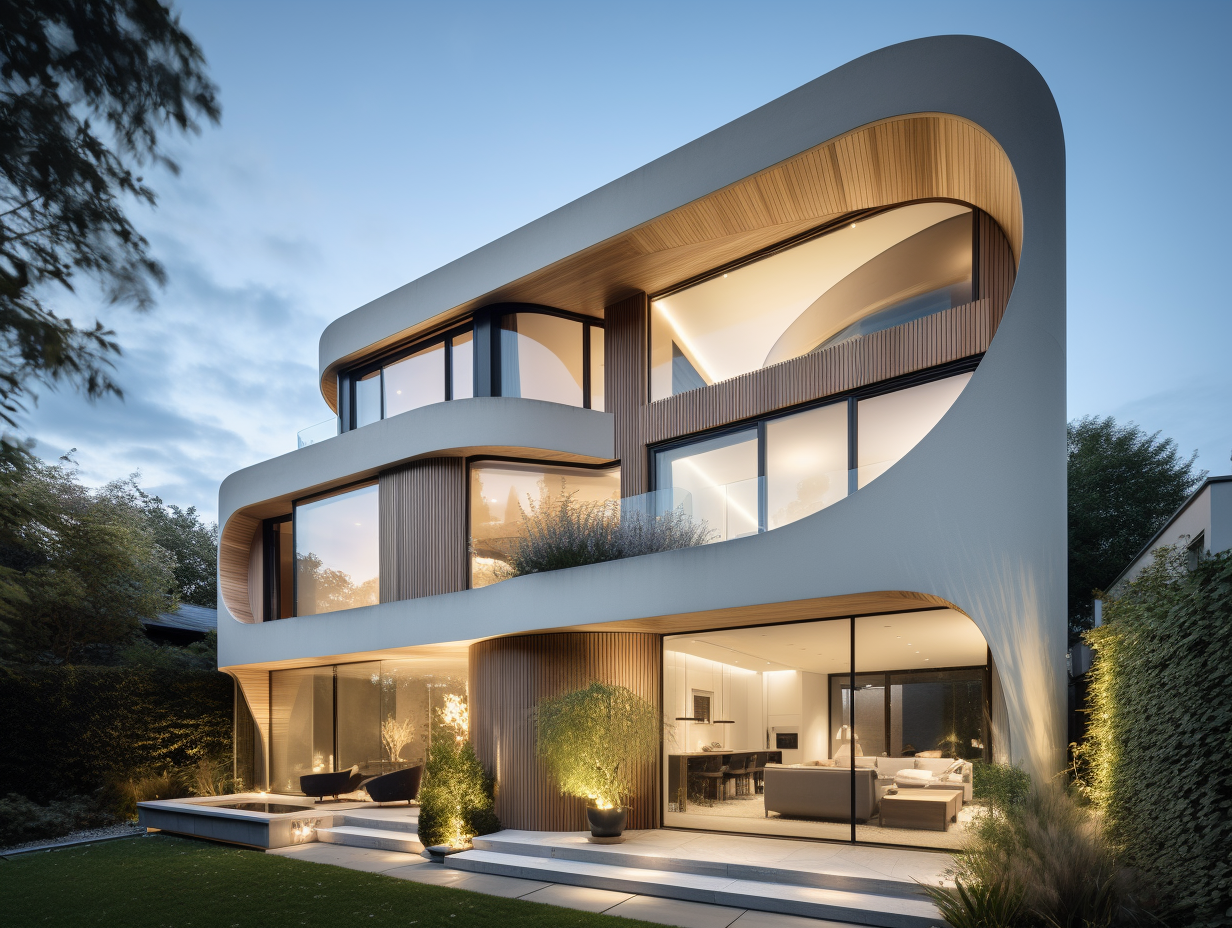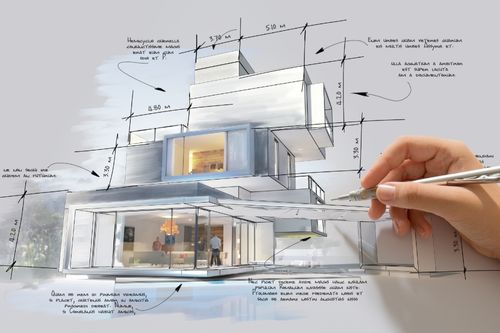Why CDA Architects Are Leaders in Architectural Layout and Innovation
Why CDA Architects Are Leaders in Architectural Layout and Innovation
Blog Article
The Impact of Technological Improvements on the Style Practices of Contemporary Architects
The rapid advancement of technical tools has considerably improved the layout landscape for contemporary engineers, cultivating unmatched degrees of development and sustainability. The integration of Building Information Modeling (BIM), parametric layout, and fabricated intelligence has not only streamlined collaboration among varied groups but additionally redefined task execution. As architects embrace these improvements, they are confronted with complicated challenges that might affect their imaginative processes. Exploring these characteristics reveals a nuanced interplay between modern technology and conventional design methods, triggering a more detailed evaluation of what the future holds for building practices.
Advancement of Architectural Devices
Exactly how have building devices transformed the design and building processes over the centuries? The evolution of building tools has considerably influenced the effectiveness, precision, and creative thinking of layout and building.
With the arrival of the Renaissance, the introduction of the compass and the protractor marked a critical shift. These devices allowed designers to attain better precision in their layouts, promoting the appearance of even more complex and proportionate buildings (cda architects). The Industrial Transformation better changed architectural method with the introduction of mechanized devices and materials, enabling larger and extra ambitious projects
In the 20th century, the development of computer-aided layout (CAD) software application changed the landscape once again, supplying designers with unprecedented abilities in modeling and visualization. Today, progressed devices such as Structure Information Modeling (BIM) and parametric style software program remain to push the boundaries of building advancement, making it possible for a much more incorporated strategy to design and construction processes.

Improved Partnership in Design
As innovation proceeds to evolve, improved cooperation in layout has ended up being a keystone of contemporary architectural practice. The integration of digital tools such as Building Information Modeling (BIM), cloud-based platforms, and advanced visualization software application has actually changed the method architects, engineers, and stakeholders interact throughout the layout process. These devices facilitate real-time interaction, enabling teams to share concepts, alterations, and feedback instantly, despite geographical area.
Moreover, online fact (VIRTUAL REALITY) and boosted fact (AR) have more enriched collective efforts by enabling immersive experiences that allow clients and employee to picture projects in a much more interesting fashion. This level of communication not only boosts understanding yet also fosters a sense of possession among stakeholders, causing more enlightened decision-making.
Furthermore, interdisciplinary collaboration has been streamlined with these technological improvements, enabling architects to function more carefully with various other experts, such as city coordinators and environmental experts. The result is a more natural approach to develop that takes into consideration different point of views and knowledge. Ultimately, boosted collaboration in style is not simply a trend; it is necessary for producing innovative, practical, and cosmetically pleasing style in a significantly intricate world.
Sustainability Through Innovation
Sustainability in style has significantly ended up being intertwined with technological advancement, driving the sector toward eco responsible methods - cda architects. Contemporary engineers are leveraging advanced innovations to reduce environmental impact while enhancing the performance of structures. One famous instance is the usage of Structure Information Modeling (BIM), which permits accurate preparation and source allotment, lowering waste throughout building and construction and advertising energy performance throughout a building's lifecycle
Additionally, clever products and energy-efficient systems are being incorporated into styles to enhance source use. Technologies important source such as photovoltaic or pv cells and eco-friendly roofing systems harness eco-friendly power resources, contributing to decreased carbon impacts. Furthermore, the application of expert system in design procedures makes it possible for engineers to imitate and assess power usage, assisting choices towards even more lasting end results.
The integration of lasting modern technologies not just aligns with global environmental objectives however additionally satisfies a raising need from customers for green solutions. As designers welcome these advancements, the focus changes towards developing rooms that are not only aesthetically pleasing however likewise functionally lasting, therefore redefining the criteria of modern-day design. In this method, technology functions as a driver for sustainability, enabling engineers to make structures that regard and improve the natural environment.
Challenges in Execution
While technological improvements in architecture hold terrific guarantee for enhancing sustainability, their implementation usually encounters substantial difficulties. One key obstacle is the steep discovering curve connected with new technologies. Designers and construction experts might require considerable training to efficiently make use of sophisticated software program and devices, which can postpone job timelines and increase expenses.
In addition, the assimilation of arising modern technologies, such as Structure Information Modeling (BIM) and sustainable materials, usually demands partnership throughout multidisciplinary groups. This partnership can be prevented by differences in knowledge, process, and communication designs, resulting in potential conflicts and ineffectiveness.
Financial constraints further complicate the fostering of innovative innovations. Numerous building companies, specifically smaller sized ones, might lack the sources to invest in innovative tools, limiting their capability to compete with larger firms that can manage such investments.
Additionally, regulatory frameworks and building regulations might not equal technical improvements, creating uncertainty and possible compliance problems. This obstacle can dissuade architects from totally welcoming new technologies, as the risk of non-compliance may outweigh the advantages. As a result, attending to these application difficulties is crucial for the successful integration of technical developments in modern building methods.
Future Fads in Style
The obstacles linked with the application of new technologies in style have prompted a reevaluation of future fads within the market. As designers navigate issues such as sustainability, urbanization, and social equity, they are significantly adopting cutting-edge modern technologies to boost style performance and ecological performance.
One prominent fad is the assimilation of fabricated knowledge (AI) in the layout process. AI devices can assess large datasets to inform design choices, boosting both creative thinking and performance. Structure Info Modeling (BIM) continues to progress, making it possible for real-time collaboration among stakeholders and helping with structured job monitoring.
Sustainable layout techniques are also gaining momentum, with designers focusing on adaptive reuse and regenerative style concepts that minimize resource consumption and waste. The consolidation of clever materials and eco-friendly energy sources will certainly better boost the strength of buildings despite climate adjustment.
In addition, the site web rise of parametric check my site layout permits for even more customized and context-sensitive building remedies. By utilizing these improvements, engineers are poised to create constructed environments that not just deal with the immediate demands of culture yet additionally anticipate future obstacles, thus redefining the function of design in an ever-changing globe.
Verdict

Report this page